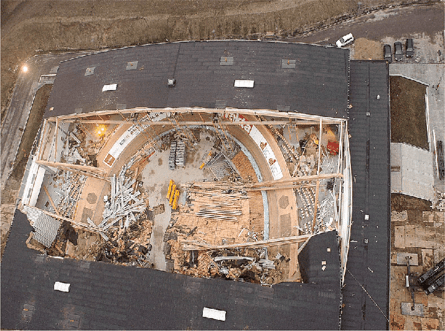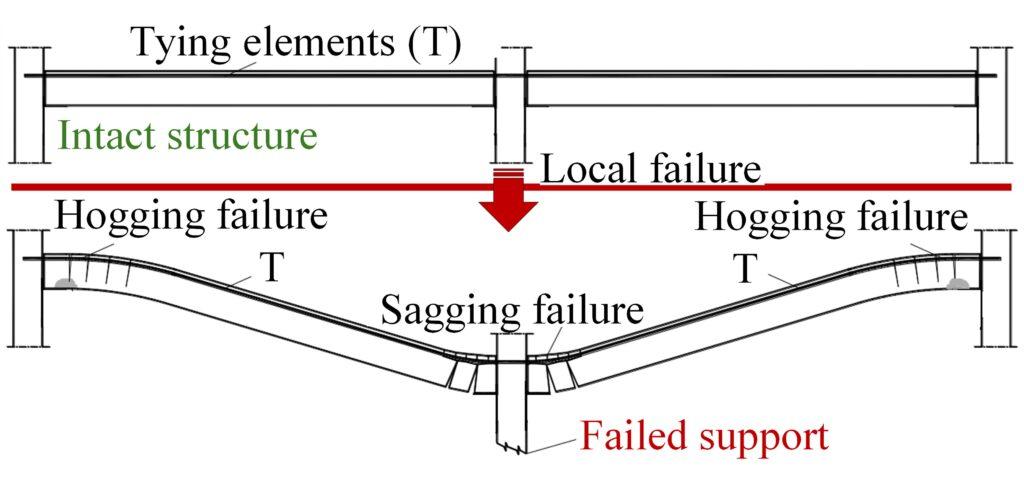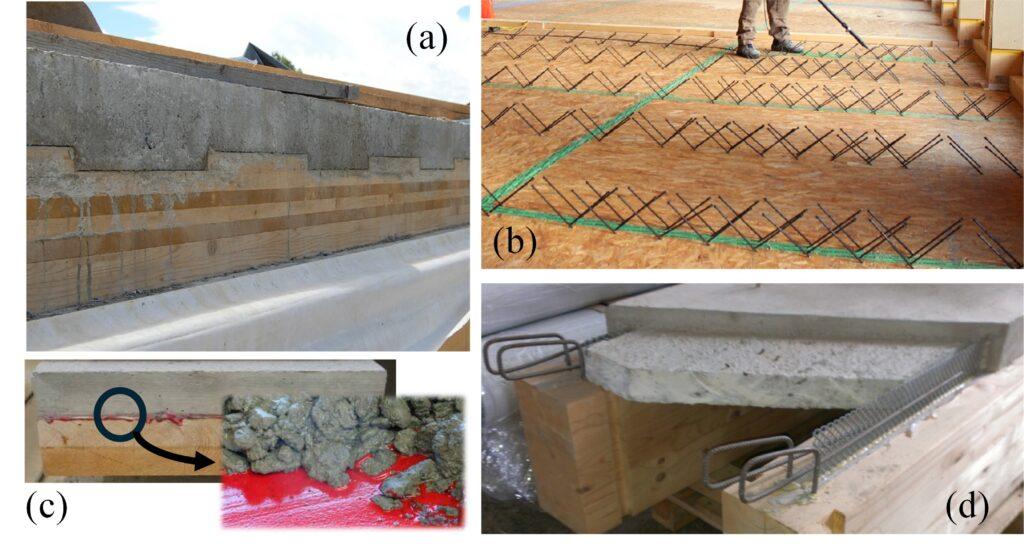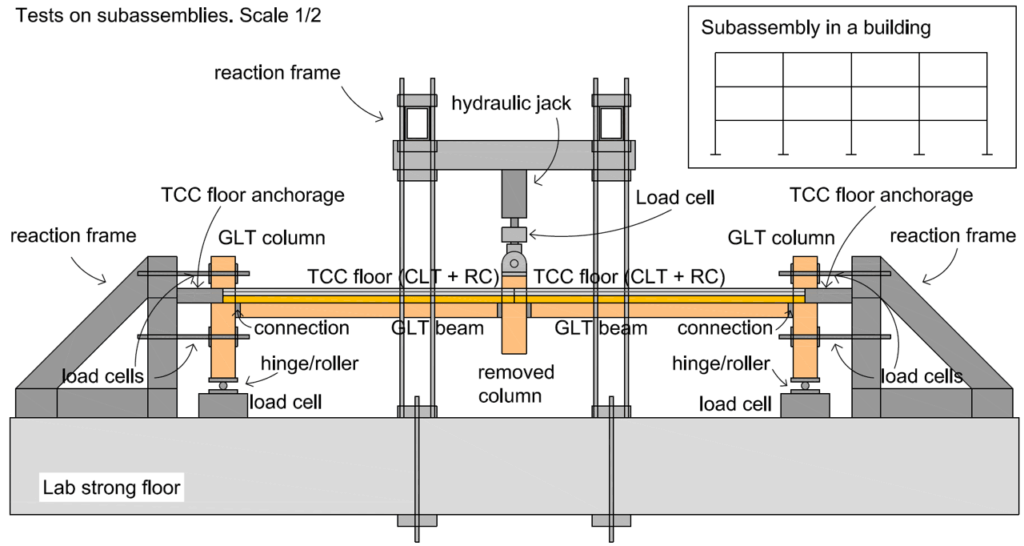
ENCLOSE
Enclose: Exploring the use of timber-concrete composite (TCC) structures to prevent the progressive collapse of buildings
Enclose is a project funded by the Spanish Ministry of Science, Innovation and Universities and hosted at the ICITECH of the Universitat Politècnica de València.
The overall aim of Enclose is to develop timber-concrete composite solutions to fulfil current robustness requirements and prevent the progressive collapse of buildings.
The project started in 2025 and spans a total duration of 3 years.
KEY CHALLENGES
Timber structures are increasingly used in the building sector due to their special characteristics in terms of sustainability. Energy efficiency, renewability, recyclability, the possibility of disassembly at the end of life, and CO2 storage are some of the highlighted characteristics of timber structures. Also noteworthy are its mechanical resistance qualities, those inherent to industrialised construction, such as easy to prefabrication, systems integration, greater safety for workers, better construction quality, higher speed and cost reduction compared to traditional systems, and those related to well-being, such as nice aesthetics and link to nature [2,3].
Timber structures are not exempt from structural failures that spread disproportionately to a large part or all of the building (see Fig. 1), a phenomenon known as progressive collapse. The concept of structural robustness arises as the insensitivity of the response of a structure after an initial failure. Although the robustness of timber structures has been studied previously, far less research has been carried out compared to RC or steel structures.
Intrinsically, building structures have different resistance mechanisms to efficiently activate these Alternative Load Paths. Arch action, or Vierendeel-type or bending mechanisms, are considered as the first lines of defence of a building after local failure. However, when all these mechanisms are not sufficient, and everything fails, we can only rely on the catenary mechanism through tying elements (redundancy and continuity), where a structure must assume large deformations and rotations in the beam-to-column connections (ductility), so that the structural elements close to failure work efficiently in tension (Fig. 2)



THE GAP
Although several attempts have been made to efficiently activate catenary mechanisms in timber structures, none have been able to show sufficient ductility to achieve high rotation to activate the catenary mechanism. Ductility in timber structures is mainly achieved through the metallic connections between the timber elements. Consequently, from a robustness point of view, these connections are deficient in achieving the desired objectives.
Further efforts in improving beam-to-column connections are a possible way to ensure appropriate target performance. However, this project proposes a radically different alternative: to develop new robust solutions through the use of timber-concrete composite (TCC) floors (beams and slabs) to achieve the target performance (Fig. 3).

OBJECTIVES
The overall aim of Enclose is to develop timber-concrete composite solutions to optimally fulfil current robustness requirements and prevent the progressive collapse of buildings.
In view of its defined overall aim, Enclose will have four specific objectives:
⇒ Objective 1: To explore and design new flooring composite systems and connections to fulfil robustness requirements.
⇒ Objective 2: To characterise the mechanical properties of the materials and new components and the structural performance of subsystems.
⇒ Objective 3: To implement the solution in real buildings and develop simplified methods.
⇒ Objective 4: To disseminate, communicate and pave the way for transferring results to the industry.

METHODOLOGY
Enclose is organised into four Work Packages (WP).
WP1: Exploration and design of the new solution.
In this first work package, new solutions based on timber-concrete composites (TCC) for the flooring system will be developed. The analysis will focus on analytical and computational methods, which will be applied at different levels, from the study of the materials and connections suitable for the framed system, the design of the flooring systems based on TCC to accommodate robustness requirements, and up to the integration of the solution at a building system level. This WP will also require a knowledge of the timber construction sector.
WP2: Material characterisation and structural performance of materials and composites.
The second work package will be based on experimental material characterisation. Isolated materials and interactions between structural components will be characterised in order to correlate the computational models with actual behaviours. Thus, the wood, the concrete and the beam-to-column connections will be characterised. In addition, material testing will also be performed for TCC floor specimens (pieces of slabs subjected to compression, bending, tension, shear, bond slip) and for frame-to-floor TCC subsystems (interactions between the frame and floor systems).
WP3: Implementation.
The third work package will deal with the implementation of the new solutions into real buildings. For this, subassembly tests will be performed in substructures extracted from a representative building of the construction sector. Then, parametric analyses are planned to be carried out with validated computational models where the effect of main variables will be evaluated and where the integration into the whole 3D building will be re-checked. The development of simplified calculation procedures, which are popular in the timber industry, is also an output expected for this WP.
WP4: Dissemination, communication and transfer of results to the industry.
In this WP, communications through social networks and different events are expected. Additionally, the dissemination of the research will also be carried out through the publication of scientific articles and presentations in international conferences. The transfer to industry will also be considered in the foreground of the tasks to be developed in this WP.


HUMAN RESOURCES
The team is made up of an international group of seven senior researchers from Universitat Politècnica de València (Spain), Griffith University (Australia) and Imperial College (UK). In addition, the team will be completed by two young researchers, one PhD Student and one Postdoctoral researcher.
IMPACT
Based on the main novelty of the project through the use, for the first time, of TCC in the field of structural robustness of timber structures, Enclose will overcome important current limitations and generate radical new solutions that can be implemented to meet structural robustness requirements. This new development will be accompanied by simplified calculation methods and the development of a design guideline for practitioners.
The scientific impact and the contribution to the generation of knowledge will also be significant since Enclose goes significantly beyond the state-of-art and allows the opening of a new line of research where TCC is used to increase robustness. The technological and social impact will also be significant with the development of new solutions that can be implemented in an environmentally friendly sector to increase the safety and service performance of buildings.

The Project (PID2024-160639OB-I00) has received funding from the Spanish Ministry of Science, Innovation and Universities (MICIU/AEI/10.13039/501100011033) and the European Social Fund Plus (FSE+).
